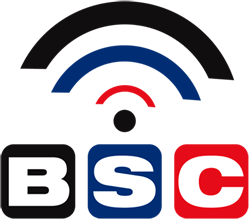The rampant spread of COVID-19 has been unprecedented and has impacted every aspect of daily life from the way we travel, shop to work, and most importantly, eat. As a result of nationwide stay-at-home orders, restaurants, in particular, are forced to adjust quickly to this new reality.
Over the past several months, the pandemic forced independent restaurants to close dining rooms and pushed menus to compete with takeout fare. Despite the chaos, the nation’s drive-thrus have continued to produce orders, providing financial relief for chains like McDonald’s, Whataburger, Chick-fil-A and more. Employees at these fast food centers have become educated about their health and are maintaining high safety standards to avoid contamination to protect themselves, and those they serve.
QSRs, otherwise known as limited-service restaurants (LSRs), are establishments that serve food quickly and do not provide table service. This concept is now working in their favor. Advertising is projecting messaging that emphasizes ‘contactless service’ encouraging drive-thru, takeout, pickup, and delivery.
Maintaining Supply-Demand Balance
Whether it is picking up a coffee or getting a quick lunch on the way to a meeting, drive-thrus have helped Americans create routines and get comfortable with various fast food options.
Families place large orders, and a life without having to do this is unimaginable for many. It’s become a part of our culture.
The Drive-Thru Window Has Stepped Up
The drive-thru, a practically century-old American invention, is fast-food restaurants best shot at surviving during times of contact restrictions. Fortunately, a few leading operators have been streamlining drive-thru wait times and creating seamless customer experiences to support evolving customer expectations that long preceded the COVID-19 jolt.
For example, some quick-service restaurants like Whataburger, McDonald’s, Taco Bell, etc. have changed how their drive-thrus are running. McDonald’s has made a handful adjustments like simplifying its menu to make lines move faster by cutting all-day breakfast and using only one type of lettuce. (Yaffe-Bellany 2020)
Following CDC requirements during COVID-19, Whataburger has sourced and is providing disposable masks to all employees. Drive-thru employees also must follow a 4-step procedure before handing food to customers, or after doing anything that may contaminate their hands.
Taco Bell adapted to the increase of to-go food by moving its drive-thru workers from the window to vacant dine-in areas, opening up areas to assemble larger, more complicated orders. (Yaffe-Bellany 2020)
By following their lead, other quick-service brands can rethink resources to meet the demands put in place by the unexpected. QSR’s are creating contingency plans to addressing the current crisis while preparing their businesses for the long-term, especially as many of the behaviors adopted during the pandemic will change future customer habits and expectations. (Davytian 2020)
New Priorities
According to global business strategy consultants McKinsey & Co., QSRs should stay informed of continuous change and immediately act on critical impact areas of business such as logistics, food handling and human resources. Short-term priorities for QSRs during the crisis will determine long-term outcomes.
Health and Safety
QSR policies and procedures are forever changed. Most have established new health and safety processes and policies to protect employees and customers. These mitigation plans did not exist before COVID-19 for most businesses. On-site food preparation follows local, state and national guidelines such as shutting down self-serve prepared-food counters, suspending all customer events, and switching to a delivery-only model. Will we return to eating as entertainment? Only time will tell. Delivery services such as Door Dash and Uber Eats are hiring.
QSRs have instituted strict protocols for hygiene and safety, such as providing hand sanitizer, temperature checks and training employees to minimize interpersonal contact. Cleaning dining and service areas has gone from a corporate initiative to following state and local disinfectant requirements, sterilizing high-use areas such as counters, touch checkout screens, and door handles on equipment. During reopening, we haven’t seen salt and pepper shakers and condiments on the table at dine-in establishments.
Safeguarding the Bottom Line
Despite physical-distancing regulations, restaurants can continue to generate sales. Take-out and delivery have become the norm. As we see dining rooms and common areas become public spaces again, we see customers returning. People need people. As we return to a new normal, there is a new level of consciousness on the rules of engagement from consumers.
Increasing online channel communications, many QSRs built their online-ordering mechanisms on their websites, or mobile apps and are working to make sure these can handle an increase in demand. Meanwhile, companies that don’t have their online capabilities have partnered with call centers, delivery aggregators, and third-party providers. In either case, restaurants are finding that they need to expand their delivery fleets. Some are reassigning in-store employees to assist with delivery operations. (Becker 2020)
Retrofitting kitchen operations while meeting customers’ changing means QSRs should recognize the need to simplify their operations to avoid putting more stress on an already-strained workforce. They are striving to meet new consumer needs without making kitchen operations more complex. (Becker 2020)
Sending targeted customer communications as to what restaurants say to their customers is changing from “Doesn’t this look delicious?” to “Our food is safe”. We’re seeing more online and TV media ads because that’s where the audience is. It’s a big change to see a TV ad featuring a pizza chain box that prevents opening with a “quality tape seal” applied before the product leaves the store.
Communication Equipment Challenges
Drive-thru communication equipment is designed to take heavy use, but we’ve seen a big increase in headset repairs. The biggest issue apart from wear and tear of increased use is improper cleaning techniques. Headsets are not designed for cleaning with products like bleach or sprayed with a household liquid cleaner. The mics are sensitive and require a manufacturer-approved cleaning process. Because the equipment is manufactured to be ultra-sensitive to ambient noise and noise reduction, the foam booms that cover the mics should be removed or replaced for sanitization.
Business Sound and Communications wants to be your resource for service excellence, and a big part of the “new” drive-thru experience includes health and safety measures that are new to everyone. Managers see repair costs rising are looking for ways to reduce damage to equipment. We’re providing some references here to help with cleaning and servicing needs.
HME
We’ve included a download from our website on how to clean HME headsets. These methods will work on other brands of equipment as the technology is similar from brand to brand. DOWNLOAD HERE
PARTECH
About Business Sound and Communications
Business Sound and Communications is a full-service drive-thru communications sales and service company featuring HME, PAR Tech, Panasonic, Mood:Media and ICRealtime brands. We have served Houston area restaurants and drive-thru establishments for over 30 years. For more information, please call (281) 590-3400 or find our website at https://www.bsctx.com/
Works Cited
Becker, Sabine. “Delivering When It Matters: Quick-Service Restaurants in Coronavirus Times.” McKinsey & Company, Mar. 2020, www.mckinsey.com/industries/retail/our-insights/delivering-when-it-matters-quick-service-restaurants-in-coronavirus-times?cid=other-eml-alt-mip-mck.
Yaffe-Bellany, David. “Drive-Throughs Are Now a Lifeline for Fast-Food Chains.” The New York Times, The New York Times, 1 May 2020, www.nytimes.com/2020/05/01/business/coronavirus-fast-food-drive-throughs.html.
Davytian, Emil. “Responding to COVID-19: Fast Food Focuses on Drive Thru, Pickup.” QSR Magazine, Mar. 2020, www.qsrmagazine.com/outside-insights/responding-covid-19-fast-food-focuses-drive-thru-pickup.


